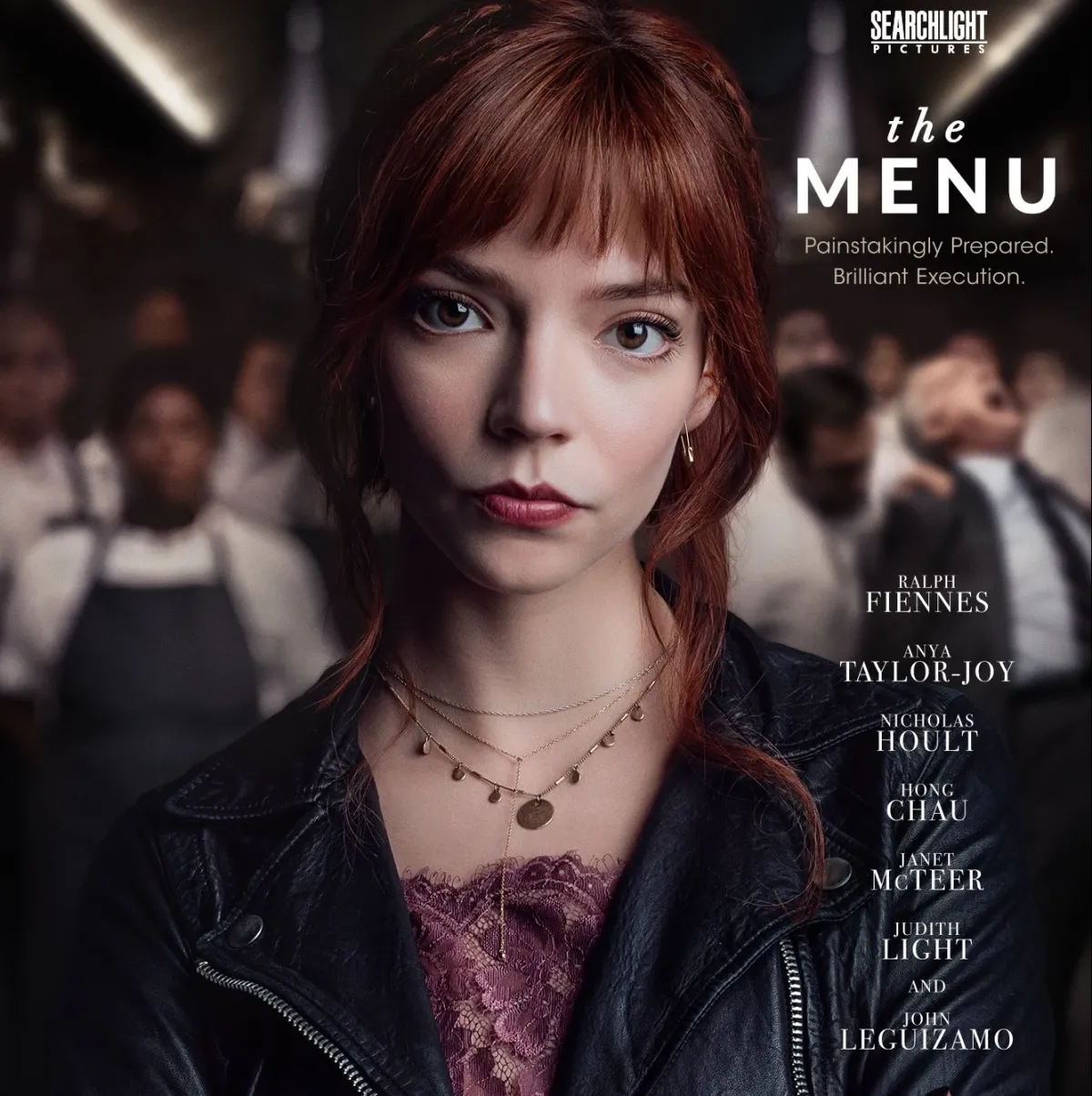Psychological thriller exceeds genre expectations

This year has seen a flood of thriller and horror films, and while some have fallen flat, the new movie “The Menu” shows the genre at its high point. Directed by Mark Mylod (“Succession,” “Shameless”), the movie mixes dark comedy and thrills to engage viewers and shine a spotlight on society.
“The Menu” follows foodie Tyler (Nicholas Hoult) and his companion Margot (Anya Taylor-Joy) as they dine at the prestigious Hawthorne restaurant located on a secluded island. As the multi-course meal goes on, celebrity head chef Julian Slowik (Ralph Fiennes) pushes the couple and the rest of the snooty, intentionally insufferable diners to their limit, revealing his tormented inspiration for the night’s menu.
In movies with a constrained location, so much of the weight falls on the actors to make their characters feel real and engaging, and with its ensemble cast, this is the specialty of “The Menu.”
Leading the film are Hoult and Taylor-Joy, who capture the tension of a dysfunctional couple. As an outsider to foodie culture, Taylor-Joy’s character also serves as a relatable relief for the audience. While the two leads are electrifying by themselves, Fiennes fits perfectly into the mix with his sincere-yet-twisted take on the head chef, also providing cynical comedy through his iconic dry humor and deadpan delivery.
While the main characters keep the action moving, multiple supporting actors make up the rest of the patrons that immerse the audience in the world of the film. All of the restaurant-goers represent the worst of humanity, and the respective actors push viewers to truly hate their characters.
Despite this, the supporting cast never feels shallow. The movie provides commentary on elite cooking culture and the work of artists as a whole, and the characters are in-depth replicas of the actual people who would dine at a place like Hawthorne and never shut up about it.
Amid an abundance of thrillers and horror movies without much purpose, “The Menu” also rises above the rest due to this commentary and its critical themes. Slowik serves as a representation of artists who’ve lost their passion and service workers who’ve grown jaded. Mylod’s direction makes him a villain viewers can sympathize with. Like other societal thrillers, “The Menu” conveys the issues of the present. In this case, it’s a critique of who Slowik calls the “takers” of society.
The movie’s sense of arrogant taking is crafted visually by the set design and artistic style. Led by production designer Ethan Tobman (“Room,” Beyoncé’s “Lemonade” movie), Hawthorne’s hyper-modern style consists of glass, stone and wood, much like any elite restaurant would. The visuals of the movie also build up the thrilling atmosphere. With the dimly lit restaurant located on an isolated, wooded island, it’s hard not to feel on edge the whole time.
Also helping create this unnerving atmosphere is the movie’s tense score, composed by writer and performer Colin Stetson (“Hereditary”). With a focus on droning cellos and harsh orchestral hits, the aggressive music snaps at the viewer whenever they start to feel at ease. This symphonic backing also fits the movie thematically, as the characters would undoubtedly be the kinds of people to frequent classical concerts just for the sake of appearances.
Despite “The Menu” creating a gripping cinematic experience, some directorial choices muddy the tone of the movie and can leave the audience rattled.
Being described as a mix of dark comedy and a psychological thriller, it’s clear that the film is trying to recreate the feeling of similar movies, such as “Get Out.” While the jokes of that movie serve as clear comedic relief and land every time, the twisted humor of “The Menu” is less reliable. Fingers getting chopped off serve as the backdrop for jokes about how annoying foodie culture is, and it’s easy for viewers to be unsure as to whether they should be laughing or grimacing.
Another downside of this genre blending is how the movie approaches some topics in inconsiderate ways. Suicide acts as a plot device in the movie more than once, and while it’s treated with the shock it merits, the movie quickly uses the deaths as the basis for more jokes. At another point, a line cook’s experience of sexual harrassment is primarily used to introduce a morbidly comedic action sequence, which can leave the audience with emotional whiplash.
While Mylod occasionally fumbles in this mix of genres, “The Menu” is still a hair-raising thriller that taps into dark humor, and it does so while creating a thought-provoking and engaging experience.



